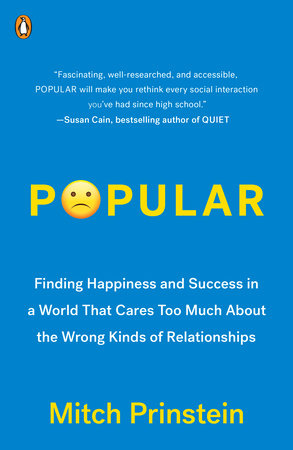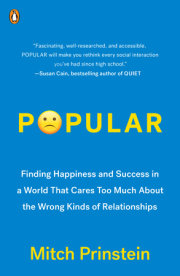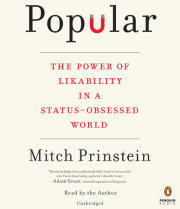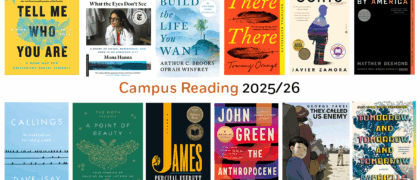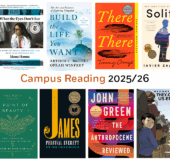Chapter 1
The Adult Playground
Where Popularity Still Matters
Popularity gets you nowhere after high school; matter of fact, it’s the last thing on your mind.
—Anonymous
On a Tuesday evening in October, about two hours outside of Chicago, a woman wearing a short skirt attempted to sit gracefully on a chair made for a small child. That woman was Paula, a friend of mine from college. When I first met her, Paula had brown, tousled hair, and recently had lost some significant weight. Today, she is an ER nurse. She is married, has two sons, and has become a bit of a fashionista—always buying new shoes and trendy handbags. Nevertheless, she usually still thinks of herself as “that pudgy girl with the sloppy hair,” and on that Tuesday evening, she texted me just before the start of the school board meeting at her son’s middle school. “It’s all coming back to me while I sit here. The teasing, the anxiety, the homework. I feel like someone may shoot a spitball at any moment. :)”
Paula was at the meeting to lobby for funds that would revitalize a gifted program she desperately wanted for her children. After six months of trying without any progress, she was losing patience. She’d written a coherent proposal, developed a budget, gathered data from comparable programs in nearby districts, and even asked a few teachers to testify on behalf of her idea.
“If we have a better gifted program, fewer parents will send their children to the local private school,” she argued. “The retention of gifted children in the school system will lead to better test scores and a return to the levels of state funding we had three years ago. The program will essentially pay for itself.” But the previous month, the board had allocated funds for a faculty lounge in the same school instead.
I checked in with Paula a few days later to see how her meeting had gone. She told me that just before it started, a woman named Susan showed up.
“She walks in, probably just to show off another new Birkin bag, and looks around the room like we’re supposed to throw roses at her feet or something,” Paula said.
Susan’s daughter was in the same class as Paula’s son. It was Susan’s first appearance at a school board meeting. Several of the other parents in the room saw her and waved enthusiastically. One woman immediately ran over to give her a hug and cried, “Oh my goodness, it has been so long. We have to catch up!”
“Ugh, I got so annoyed when I saw how everyone kisses up to Susan,” Paula told me. “But I gave her a hug, too.”
The meeting started, and the board president began by soliciting ideas for how to help the school develop a higher profile within the district. A few minutes into the discussion, Susan stood up and addressed the room.
“I agree that we need to think about how to make ourschool stand out. I was visiting my sister last week in Michigan, and a few kids from the gifted program at her kid’s middle school had just won a science tournament. The next thing you know, the school was in the paper, and the drug company that sponsored the tournament gave the school a big donation. Why don’t we do that here? Do we even have a gifted program?”
Within thirty minutes, the board voted to approve additional funding for the program. Paula was both elated and furious—it was great news for her son, but in a few minutes, Susan had achieved what Paula hadn’t been able to do in six months. Susan hadn’t offered any new arguments or presented any research on school funding trends. But somehow, her ideas got traction.
“Everyone is always just so excited to do whatever Susan wants,” Paula complained. “Sometimes I can’t stand it.”
Joe is a professor at a well-known university. He’s been on staff for ten years, but was not supposed to be next in line for a promotion. His more senior colleague, Franklin, has been in the same position three years longer and has a more impressive record of scientific publications. In just the past year, Franklin obtained a prestigious grant to support his work, and a top journal featured one of his papers as its lead article, suggesting that his research was making a very important impact in the field.
Joe has also been publishing, but in journals of much lesser quality, and he has never been awarded a grant.
Nevertheless, everyone loves Joe. He always has something amusing to offer at faculty meetings. He regularly makes the rounds up and down the halls of his department, having energetic doorway conversations, and he’s always open-minded to whatever opinions are expressed when department politics emerge. People reflexively smile when they see him.
That is not the case with Franklin, though. In fact, heis so contentious that his very name has become an adjective in the department, as in: “Let’s add this to the consent agenda, so no one gets all Franklin about it.”
At one faculty meeting, the agenda included a discussion about which of two courses should be added to the requirements for a second undergraduate major offered by the department. A committee that had spent the past three months developing the proposal outlined the pros and cons for each of the course selections, and then asked for comments and questions. As Franklin’s hand launched up, the rest of the faculty shifted in their chairs and avoided eye contact with him.
“I don’t know why we want a second major at all,” he began. “I’ve been saying for years that this is a huge waste of time that puts burden on our staff, and also on us. I spent three hours last week meeting with students about this, and I don’t even know why we have it. One major is enough for our department!”
Groans could be heard all around the room. Many of the faculty lowered their heads, ostensibly to check something on their phones. After a moment of uncomfortable silence, the committee chair opened the discussion to other comments. A few people praised the committee for its work and expressed a clear rationale for which course should complete the major requirements. A consensus quickly became evident, with enthusiastic nodding around the room.
But Franklin was not convinced. “Look, I think this is a huge mistake,” he said, interrupting the next speaker. “You are all going to wish you had stopped this second major when you had the chance,” at which he defiantly picked up his iPad and tuned out for the rest of the meeting.
Two weeks later, a senior professorship opened just above the level occupied by both Franklin and Joe. It was Joe who received the promotion.
Jennifer is a successful statistician who works at a federally funded research center that is testing new cancer drugs. By age thirty-five, she already had become the director of her unit at the institute and the president of a national professional society for statisticians, and she had even been invited to the White House as a member of an expert panel. She also is deeply in love with her wife of fifteen years, an oncologist.
But Jennifer is not happy. In fact, on many days she’s pretty down on herself. Even though she knows she is doing well professionally, she just can’t shake the feeling that she is somehow inferior to her colleagues. The same despondency affects her relationships. Her wife often tells her how much she loves her, but Jennifer feels as if she is incessantly being judged and criticized. Even with friends or coworkers, she senses that everyone has made plans but excluded her. Everyone is just so arrogant, she would think. They’re no better than me.
So, when Jennifer was recruited to lead a team on a new high-profile grant in North Carolina’s Research Triangle, she was more than happy to move. She chose a little neighborhood in Chapel Hill called Southern Village. Ever the statistician, she loved how this community had been developed based on modern urban planning research. The constellation of apartments, town houses, and single-family homes, which collectively encircled an old-fashioned town square, was designed to foster community engagement and social interaction. The urban planning principles seemed to work—the town square indeed became a hub of almost utopian friendly exchange, like a scene from The Truman Show. On the first Wednesday of each month, the neighborhood sponsored a dog parade. On Friday evenings, the community assembled on the green in the center of the square to watch movies and share a picnic dinner. This is just the place to feel at home, Jennifer thought.
But after six years there, not much had changed for her. Jennifer still listened to her coworkers make happy-hour plans, but she was not invited. When she went to the green on movie nights, she resented that everyone who came by talked more to her wife than to her. And she was particularly annoyed every morning by the sight of the neighbors who would stand at the foot of her driveway chatting with one another. “I don’t know what I ever did to them,” she once told me, “but they never ask me to go running, or to yoga, or anything—even if I am standing right next to them!”
Alan is forty-six years old and has a weakness for pie. He has a very nice office in downtown Sunnyville but he hadn’t been at his desk all week. Instead, he sat in the last booth at the local diner to catch the view from the huge bay window right next to his table. On a clear day, this was an ideal spot to see the whole shopping district downtown, and on this particular afternoon, he had covered not only his table but the one next to it with file folders, Post-its, and empty cups of coffee strategically placed on top of papers.
No one at Sunnyville Diner seemed to mind. One of the waitresses, Lateesha, waved at him when she began her shift.
“The day hasn’t really begun until I see you!” Alan called out. Lateesha smiled while playfully holding a dish towel over her face.
When Donna, the hostess who had recently separated from her husband, came to his table, he held her hand in both of his and asked, “How are you holding up?”
Even the chef gave him a nod and a smile as he walked tothe front of the diner. “Best pie yet!” Alan told him with his mouth full.
At about 5 p.m., Alan was greeted by Mike, a colleague from his former real estate development firm.
“Hey, looks like you’ve moved in,” Mike joked. “Working on a pitch?”
“Yup, north side of town. Ten acres, mixed-use development, plus a new hotel,” Alan replied, pointing to the coffee cup at the edge of the table. As Mike questioned him about the project, Alan used a laser pointer to trace the perimeter of the property, the stream that would cut through it, and the new set of apartments, marked by a sugar dispenser in the middle of the table.
Mike hadn’t blinked in at least a minute as he listened to Alan’s plan and finally shook his head. “You have no fear, man. The northside? Really? Here in Sunnyville? You know they turned us down when we pitched there last year. ‘This generation will never see development in that part of town,’ they told us. Good luck, you’re going to need it!”
Alan’s presentation to the town council lasted over three hours. And for most of it, things did not look good. Just fifteen minutes into his presentation, two council members interrupted him to say that they were simply not going to be able to support the project.
“This isn’t a sound investment for Sunnyville,” one of them asserted. “The implications for the traffic and road repair alone are far too substantial to seriously consider any type of mixed-use development in that part of town.”
But Alan persisted, armed with graphs, town records from the archives, and the testimony of experts from nearby properties he had developed who were ready to comment on his successful track record. But mostly,Alan had a patient, nondefensive, and unwaveringly enthusiastic demeanor as he calmly described every detail of the planned development. When his estimate ofthe project’s finances was disputed, he smiled, took a step back, and walked his inquisitor through his figures. When the town council members challenged his ideas for possible commercial uses of the property, Alan was firm, but open-minded. When they questioned his proposed timeline, he made a joke and agreed with their assessment.
By 9 p.m., the council members were ready to allow questions from the town’s residents in attendance. One spoke critically of the proposal and also shouted an insult directly at Alan. He took it in stride, even self-effacingly. When other citizens praised him, he was modest, and when they embarrassed themselves with incomprehensible questions, he rescued their dignity. Finally, after thirty minutes of discussion, it was time for a vote.
The proposal passed unanimously. The onlookers applauded as Alan closed the biggest deal of his career. Many were excited about the changes coming to their town. But as some shook his hand to congratulate him, it almost seemed as if they were rooting more for Alan than the proposal itself.
After everyone left, Alan remained in his chair for a few moments, in stunned disbelief. Mike had witnessed the entire meeting and now walked over to offer his own congratulations.
“I am so glad I pulled those old town records,” Alan said. “I think that may be what got them.”
Mike shook his head and patted his friend on the back. “It wasn’t the records,” he said. “It wasn’t the experts, and it wasn’t even the breaks you offered them. We did all of that last year, and they never agreed to a single proposal. It was you, man. They didn’t vote for the project, they voted for you.”
Everyone knows a story like these. Some of our coworkers and neighbors are consistently successful, and not for the reasons we might expect, while others don’t get their way no matter how hard they try. We also all have peers who feel excluded in every context, while others have mysterious confidence and consistent social success. We may think we left the mores of high school behind us, but popularity is still very much a part of the adult playground. It is that one factor that no one really talks about, yet it makes a big difference in our lives. Popularity dynamics affect our careers, our success in meeting our goals, our personal and professional relationships, and ultimately our happiness.
The ongoing importance of popularity in adulthood was a surprise even to me, until I learned a lesson from my own students.
In August 2001, something strange was taking place on the campus of Yale University. I had recently been hired as a professor in the department of psychology, and I was about to give my first lecture for a course I had developed about popularity among children and adolescents. Yale didn't have a preregistration system, so anyone who showed up the first day of class was welcome to enroll. The course had been assigned a small classroom on the central campus—about thirty-five students were expected to attend.
But as I approached the building, I noticed a crowd had gathered at the south side of the lecture hall. I assumed a fire drill was being conducted, so I hung around for a while and started to chat with the students. But I soon realized that no alarm had been sounded—they were waiting for my class. All of them!
I made my way through the throng outside the building, standing wall to wall down the hallway, and stretching up the entire staircase until I finally reached the tiny classroom. The whole way I was still questioning: was everyone really there to learn about popularity? By the next session, the registrar reassigned the course to the Yale Law School auditorium, the largest available space on campus, and by the end of the first week, one out of every ten undergraduates had enrolled—over 550 students. During the course of the semester, I was contacted by university administrators, scientific advisors for national youth organizations, and ABC News. The word was out: “popularity” was popular. But why?
At first, most people reacted to the huge enrollment in the class in similar ways. More than one of my colleagues said to me something along the lines of, “Of course it’s crowded—this is Yale. These are the students who were terrorized by high school bullies, and they are all in your class to learn better social skills.”
But it turned out that this explanation wasn’t true at all. The class had a huge range of students. Certainly, some had been rejected as kids, but others were extremely popular. Some were the children of American senators and national advisors; others were top collegiate athletes. One student was a movie star, a few were musical prodigies who had already traveled the world, and others were summer aides at the White House. The group included future doctors and lawyers, scientists and politicians, economists and Fortune 500 CEOs. One became a bestselling author and another a Rhodes Scholar.
“What are you all doing here?” I asked the students as the semester progressed.
They told me that although they had long since departed the playground and the school cafeteria, they never left the world where popularity matters. During their summer internships, they saw it continue to play out in boardrooms, operating rooms, and classrooms. The basketball players witnessed it on the court, and the legal aides told me how it made a difference on juries. Even congressional interns perceived how popularity affected our government’s legislative decisions. But mostly, they saw it in themselves—knowing that whatever degree of popularity they enjoyed or endured as kids would probably come back to haunt them again. In a very real manner, our experiences with popularity are always occupying our minds. We never really left high school at all.
Years later, I was curious to learn whether popularity still mattered in the adult lives of my students in that first popularity course I taught back in New Haven. I knew just who to call.
Even with hundreds of students in the class, Daniel Clemens stood out as the one everyone knew, respected, and liked. Just mentioning his name seemed to bring a smile to the face of any professor or student on campus. A nationally ranked All-American tennis player and star student in high school, he had arrived on campus as brilliant as everyone else at Yale. But there was something that made him distinctive even in this impressive group. He was unusually kind, extremely respectful, always positive and energetic, and yet among his peers he was also regarded as incomparably cool. He was the most popular student in my popularity class. By the end of his senior year, he was awarded a Rhodes Scholarship.
Today Daniel is in his thirties, and he’s turned out exactly as you might have expected— caring, energetic, modest, and likable. In the past decade or so, Daniel has founded and sold several multimillion- dollar businesses. If you have ever used Google Docs, Daniel is one of the people you can thank, as his was one of the companies that helped create the live-collaboration capability of the application. After years working on strategic initiatives at Google, he’s now a sought-after investor and board contributor to many of the most successful CEOs and entrepreneurs around the globe. He’s also a frequent keynote speaker at business schools and an advisor to entrepreneurs throughout the country, and he counts former US presidents, members of Congress, prime ministers, and CEOs of some of the most well-known global brands like Google and Apple as his close personal friends.
Daniel believes that popularity is very much a part of the adult playground, affecting the innovation and productivity of corporations all over the world. He perceives something very adolescent in the workplace that reminds him of my class almost every day, he tells me. It’s a dynamic that plays out in every meeting and influences how every decision is made.
“Here’s what happens,” Daniel explains. “After a meeting, everyone gets together in twos and threes around the watercooler, and then you hear what people really thought. And it’s all the stuff that didn’t get talked about at the meeting at all. I’m always amazed at the big difference, and I wonder, why the delta?”
Daniel’s theory is that efficient decision-making in business has become hampered by popularity, or rather the fear of losing it. “People don’t want to lose status or have people dislike them,” he says. “There’s a lot of norming in a company, people going with the herd, following others. People are afraid to say what they think. I find it really interesting how much we overestimate how secure those
around us are, and how much this still plays out for people in their thirties, forties, and fifties. They still need that validation from their peers. They really want people to like them, and when they think
others don’t, it stings them for days, or months.”
Daniel also believes that popularity has a lot to do with our happiness. “We did a study at Google,” he recalled. The results boiled down to two findings. More than raises, or promotions, or perks, there were two things that predicted who was happy and who was not. One had to do with the frequency of constructive feedback employees got from their managers. But the second was simply how much people felt they had someone—anyone—who liked them. “It’s the small things, the human things, that make organizations flourish and make people happy,” Daniel says.
“It’s funny,” he explains. “We teach writing and arithmetic. We expect folks to do very well in science and reading from a very early age. But the ability to establish great relationships with others seems
to be every bit as important to success if not more, yet it’s not taught in a formal way. We usually learn about relationships by trial and error—how to get along with peers and how to be popular. For those who can do it, great. But for others, it is a lifetime of struggling, never understanding why their peers have issues with them.”
Popularity is a part of life that we experience every day, in every type of social situation. And the way that we experience popularity in one context tends to be related to the way we connect to others in all parts of our lives.
But there’s a catch: most people don’t realize that there are two different types of popularity—one that helps us, and one that can potentially harm us, leaving us stranded in adolescence. And ever since high school, we have never come to terms with which kind we want.
Copyright © 2017 by Mitch Prinstein. All rights reserved. No part of this excerpt may be reproduced or reprinted without permission in writing from the publisher.

